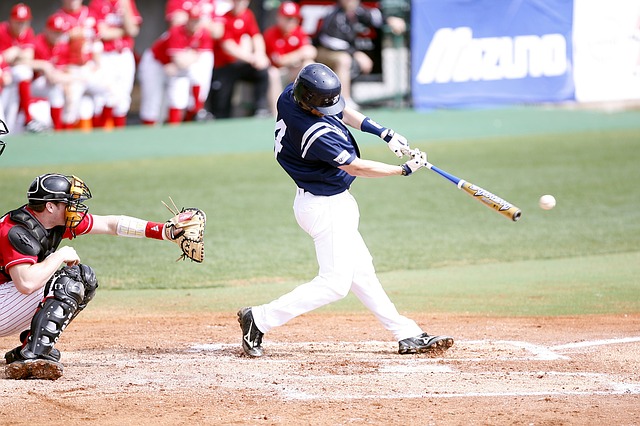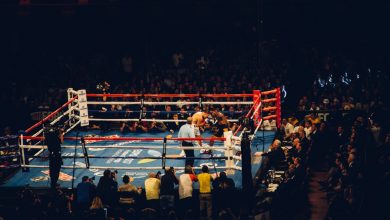Baseball Rules: How To Play Baseball

Baseball is a team game played by two teams consisting of nine active players in each.
The teams play alternately inside and out. The indoor team is the offensive team. Only the offensive team can score points, one point for each player who managed to get around the entire playing field.
The outdoor team is the defensive team and their task is to prevent the indoor team from getting around all the bases by burning the indoor team’s batsmen/runners.
Offensive / defensive team changes take place when the defensive team has burned three players from the offensive team.
A match normally consists of nine innings (rounds). If there is a draw after nine innings, the match continues one inning at a time until one team has scored more points than the opposing team. A match can therefore never end in a draw and a match also has no time limit. Back to the table of contents.
Also read See an Exercise Medicine Doctor to Treat Common Sports Injuries
The playing field The
the Baseball field has the shape of a quarter circle and the surface is grass. The plan is divided into infield (inner field) and outfield (outer field).
At infield, the bases are located as corners in a square with the running tracks as its lines. The base that lies exactly at the angle between the sides of the quarter circle is called the home plate, next to it stands the batsman.
Behind the home, the plate is the catcher who has the task of catching all the balls that have passed the batsman and behind the catcher is usually a referee. At infield, there is also a pitcher hill from which the pitcher throws the ball towards the batsman. The pitch is surrounded by a fence, behind the home plate it is extra high (about 5 meters) (backstop).
The fence is about 120 meters from the home plate in the farthest place. The distance to the fence along the plan’s left and right boundary lines (foul lines) is about 100 meters. Between the bases, it is 27.5 meters and between the home plate and the pitcher hill, it is 18.5 meters.
Also read about other sports
Defensive team – The away team
The defensive team consists of nine players spread across the baseball field in special positions.
The nine positions can be divided into three main groups:
- Pitcher (a pitcher) and catcher (a ball catcher).
- Infield players scattered around the three bases inside the court. The four positions are called 1st baseman, 2nd baseman, and 3rd baseman, and, shortstop, they take a position at the border between infield and outfield.
- Three outfield players; left fielder ( center fielder ), center fielder (center fielder), right fielder(right field player). Their task is to guard the outer part of the playing field. All players in the defensive team wear a glove to catch the ball.
Offensive team – Indoor team
The offensive team players are the same players who play outside. But in an offensive team, they must be batsmen and runners. Players must strike in a certain line order that must be followed throughout the match. After a completed inning, the next one begins with the next player in turn according to the strike order. If a player is replaced during the match, the incoming reserve must take the place of the substitute.
All players in the team must strike, except the pitcher who may have a substitute (designated hitter). When a batsman has hit the ball and it has become a valid shot, he must run towards the first base. When he reaches the first base without being burned, he becomes a runner. Only one runner at a time may be on one base.
If there is a runner on the first base when a batsman comes running, the runner must advance to the second base. A batsman or runner must not run on an invalid foul ball. For a stroke to be valid, the ball must have gone out on the court within the quarter circle bounded by the foul lines (slash lines).
The offensive team gets a point when a runner has passed 1st base, 2nd base, 3rd base, and reached the home plate without being burned. The runner must touch/step on the plates that he passes. If the runner does not step on a plate, he can be burned if the away team calls for this through a so-called appeal. If they do not, the runner will be free.
Then another match goes
Pitcher and catcher in the away team against the batsman in the indoor team. The striker from the offensive team (indoor team) occupies the striking position to the left or right of the pentagonal home plate. The pitcher from the defensive team (away team) starts the game by throwing the ball towards the batsman. The pitcher’s task is to deliver such difficult balls that the batsman can not hit them.
A correctly thrown ball must pass through an imaginary zone that is located between the batsman’s knee and in the middle over the chest and over the home plate, the so-called strike zone (picture to the right).
A stroke that is not approved, ie the ball has not been knocked out on the court but ended up outside the foul line is called a foul ball. A foul ball counts as a strike but there is an exception rule and that is if the batsman already has two strikes, then it does not count at all but the batsman may strike again.
If the pitcher has failed and thrown four times, the batsman is allowed to walk to the first base. The same applies if the batsman is hit by a throw. In addition to the pitcher throwing balls to the batsmen, he also has the task of keeping track of the runners so that they do not steal bases (see more below).
The pitcher can then try to burn one of the runners at the bases (pick off). This can happen when one runner has passed from his base one distance towards the next. The catcher must catch all the balls that have passed the batsman and he is also the one who sets up the tactics for the defensive team.
Also Read
The runner
Only one runner may be on each base. The runner runs along the field counterclockwise and can advance to the next base on teammates’ strokes or by stealing a base. When a runner steals a base, he advances on the pitcher’s throw and not on one stroke.
To burn a runner who steals, the defensive team must touch the runner. The player from the defensive team must then have control of the ball in the hand or in the glove and the runner must not have contact with, be safe on, a base. However, a runner may advance if he starts the run after the away team has caught the ball.
Expression in baseball
Appeal: a special form of appeal to the referee where you step on the base at which the mistake should have been made with the ball in hand and at the same time signal to the referee about the appeal. Beam: incorrect movement of the pitcher, which leads to all runners having to advance each base.
Base: tarpaulin-covered pillow located in three of the four corners of the infield or the rubber-covered home plate. Bundle: short stroke where the batsman holds the bat with his hands wide apart and where the ball ends up on the infield.
Doubleheader: two consecutive matches with the same team. Double play: the away team burns two opponents in the same game. Dugout: player booth.
Real Expression in baseball
Fair ball: a ball that stops or touches a defensive player in the area between the home plate and the outfield fence within the game line boundaries. Fly ball: lyre. Force play: a situation where runners have to leave their base because the batsman goes to the first base and a maximum of one player may stand at each base. Foul ball: a ball that stops or touches a defensive player in the area outside the playing field boundaries.
Foul fly: lyre caught outside the plan’s boundary lines, applies as a regular lyre. Homerun: blow – usually over the outfield fence – which allows the batsman to run around all bases and to the home plate. Infield: the area inside the bases. Inning: game round where both teams have beaten each other.
Outfield: the area outside the infield and within the boundary of the pitch. Pitch: throw from the pitcher to the batsman. Pick off: throw from the pitcher to teammates at a base to try to burn runners. Safe: when runners touch the base before the away team’s players have had time to tag the runner or step on the base.
Tag: a situation where a player from the away team with a hand or glove holding the ball touches a runner when he does not have contact with a base. The player from the away team can also touch a bass before the player from the home team does so. The player from the away team must have control of the ball in both cases.





